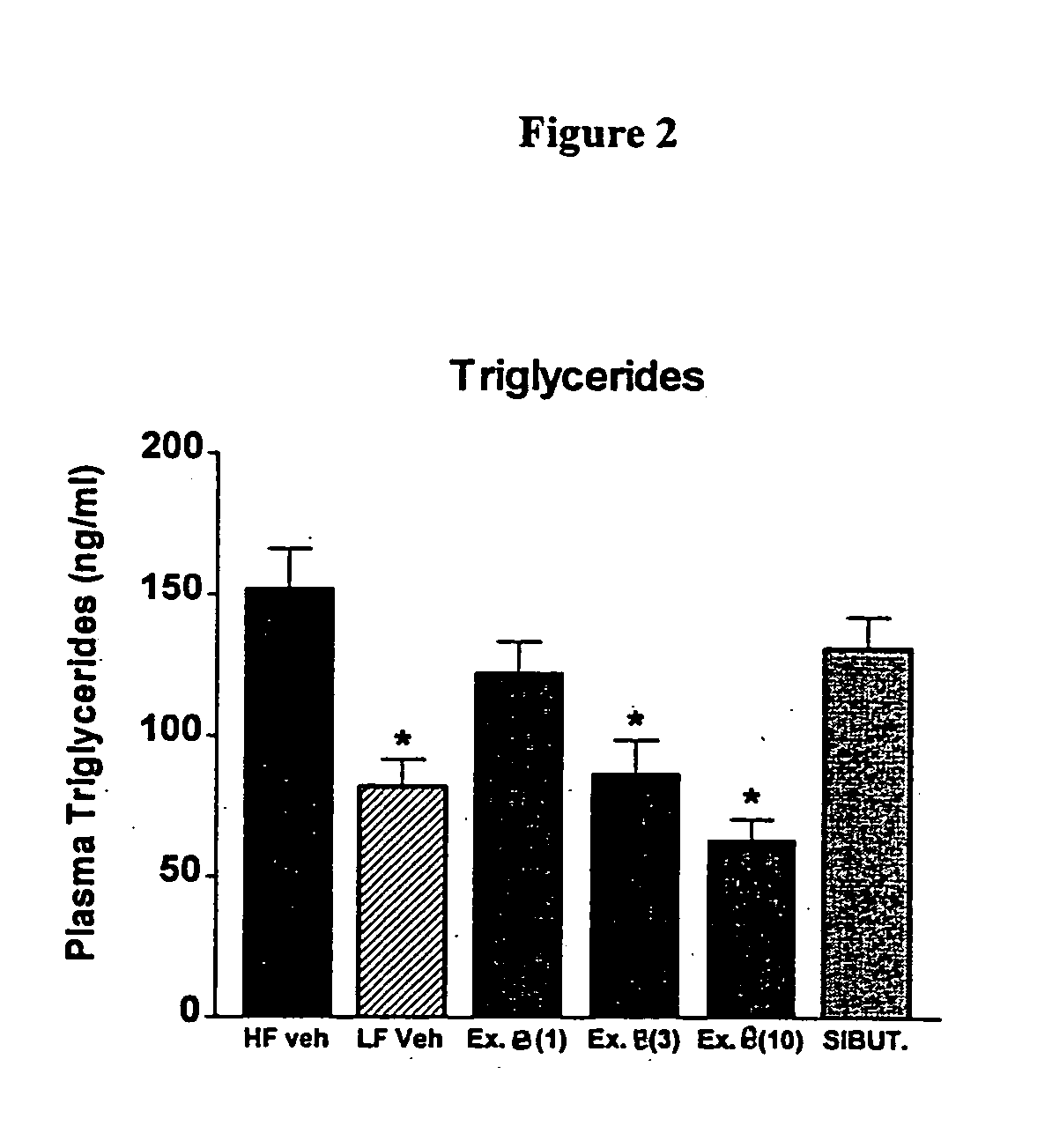Histamine-3 receptor ligands for diabetic conditions
a technology of histamine-3 receptor and ligand, which is applied in the direction of drug composition, biocide, metabolic disorder, etc., can solve the problems that the use of hsub>3 /sub>receptor antagonists for diabetes or diabetes-related conditions has not yet been specifically described
- Summary
- Abstract
- Description
- Claims
- Application Information
AI Technical Summary
Benefits of technology
Problems solved by technology
Method used
Image
Examples
example 1
4-(2-{2-[(2R)-2-methylpyrrolidinyl]ethyl}-1-benzofuran-5-yl)benzonitrile
example 1a
4′-hydroxy-3′-iodo[1,1′-biphenyl]-4-carbonitrile
[0043] To a solution of 4-hydroxy-4′-cyanobiphenyl (6.00 g, 30.8 mmol), sodium iodide (4.61 g, 30.8 mmol) and sodium hydroxide (1.23 g, 30.8 mmol) in methanol (90 mL) at 0° C. was added an aqueous solution of sodium hypochlorite (47 mL of 5.25% Clorox™, 2.29 g, 30.8 mmol) over 45 minutes. The mixture was stirred cold for 1 hour, warmed to ambient temperature and diluted with sodium thiosulfate solution (10 mL), water (80 mL) and adjusted to a pH of 7 by addition of sodium dihydrogen phosphate. The mixture was extracted with dichloromethane (2×90 mL). The combined organic extracts were dried (Na2SO4), filtered and concentrated under reduced pressure to give a white powder. The solid was crystallized from dichloroethane / hexane and chromatographed on silica with dichloromethane to give the titled compound (5.19 g, 53%). MS (DCI) m / z 339[M+NH4+]+.
example 1b
4-[2-(2-hydroxyethyl)-1-benzofuran-5-yl]benzonitrile
[0044] To a solution of Example 1A (5.19 g, 16.2 mmol), triethylamine (5.60 mL, 40.4 mmol) and 3-butyn-1-ol (1.90 g, 27.2 mmol) in dimethylformamide (13 mL) at 20° C. was added cuprous iodide (0.46 g, 2.4 mmol) and bis-triphenylphosphine palladium dichloride (0.56 g, 0.80 mmol). The mixture was stirred at 65° C. for 12 hours then cooled to ambient temperature and diluted with dichloromethane (20 mL) and hexane (100 mL). Celite® (5 g) was added with stirring and the solids were removed by filtration. The filtrate was washed with water (600 mL). The organic layer was separated and the aqueous layer extracted with dichloromethane (3×100 mL). The combined organic solution was dried (Na2SO4), filtered and concentrated under reduced pressure to give a tan solid. The solid was chromatographed on silica with 3% methanol in dichloromethane to give the titled compound (4.02 g, 95%). MS (DCI) m / z 263 [M+H]+.
PUM
| Property | Measurement | Unit |
|---|---|---|
| Frequency | aaaaa | aaaaa |
| Frequency | aaaaa | aaaaa |
| Frequency | aaaaa | aaaaa |
Abstract
Description
Claims
Application Information
 Login to View More
Login to View More - R&D
- Intellectual Property
- Life Sciences
- Materials
- Tech Scout
- Unparalleled Data Quality
- Higher Quality Content
- 60% Fewer Hallucinations
Browse by: Latest US Patents, China's latest patents, Technical Efficacy Thesaurus, Application Domain, Technology Topic, Popular Technical Reports.
© 2025 PatSnap. All rights reserved.Legal|Privacy policy|Modern Slavery Act Transparency Statement|Sitemap|About US| Contact US: help@patsnap.com



